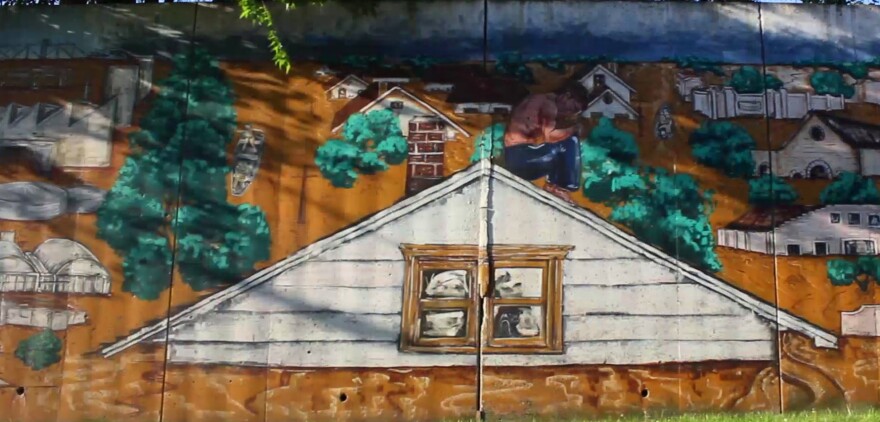If you ask almost anyone from the community of Argentine in Kansas City, Kansas what to see in their neighborhood, they’ll tell you to go see the mural.
The landmark that stretches across a block of Metropolitan Avenue is a point of pride for the residents — it’s only been tagged with graffiti twice since it was painted 17 years ago.
“But it’s been really small tags and somebody will notice and they'll give a call … and then I’ll come over here and touch it up. It’s been so small though, they almost put the tag as part of the mural,” says Kansas City artist Jose Faus, who painted the mural almost two decades ago.
Though the mural was the brainchild of Faus and artists Alicia Gambino and Jesus Ortiz, it was inspired by the community’s history, dating back to the 1800s.
We took a walk with Faus and local historian Gene Chavez, who took us into some of the most important historical moments depicted on the wall.

Among the first images on the wall are those of Native American leaders.
"Long before the Indian Removal Act, native people were being relocated to Kansas because it was an open wide territory, and among those was Tecumseh and his younger brother. I love the depiction of his younger brother who was called the prophet. His Indian name was Tenskwatawa,” Chavez says.
RELATED: How the Lesser Known Shawnee Prophet Ended up in Kansas City, Kansas
Later as immigrants began to settle in the area, industrialization began and Argentine took on a new identity.
“Argentine was established as a silver smeltering center. Later the railroads became a vital part of this community,” Chavez says.

Rail companies recruited heavily from Mexico, because many Latinos had experience laying track. They brought Mexican workers up in boxcars, where they established communities around the rail yards. The mural shows families living in the boxcars they traveled in.
“My father was born in a boxcar just like that,” says Chavez.
Parts of Kansas were segregated during that period, which is illustrated in the artwork.
Through music and sports however, they still found moments of joy.

"I love this panel here where the Mexican people are celebrating. Despite the fact the life was hard," says Chavez. "They had many musical groups that developed in this area. They worked hard but they played hard. They had great time and found relief in their times of festivals."
But soon, the mural turns a muddy shade of brown.
On July 13, 1951, heavy rains flooded the Kaw river and destroyed everything in its path.

But the flood that devastated the community, also served as a catalyst for some good.
“Some of the Mexican people say that was the best thing that ever happened to Argentine because it forced integration of public schools in Argentine before the 1953 Brown v. Board of Education,” said Chavez.

Today, Argentine takes joy in celebrating its rich heritage by organizing several parades a year down Strong Avenue. And as we near the end of the block, the image of the parade reflects the diversity of the community.
But at the very end of the mural, the images change, the colors are dull and there is not a face to be seen.
“The idea is that sometimes if you forget what community is about — you build cities that nobody wants to live in. That's deathly,” says Faus.
It’s been 17 years since Faus and his friends finished the mural, and the community still takes pride in the final product. He credits that to the story illustrated in the art.
“Communities are living things, they're organisms, and they have histories that are far more important than the ones that the tourists come and see … it’s a beautiful thing to see that it has had so much life.”
This look at the line between Wyandotte and Johnson Counties is part of KCUR's months-long examination of how geographic borders affect our daily lives in Kansas City. KCUR will go Beyond Our Borders and spark a community conversation through social outreach and innovative journalism.
We will share the history of these lines, how the borders affect the current Kansas City experience and what’s being done to bridge or dissolve them. Become a source for KCUR as we investigate Johnson and Wyandotte Counties.




